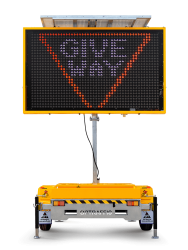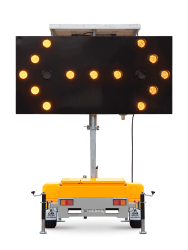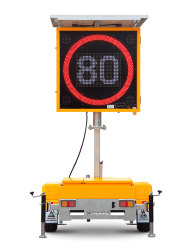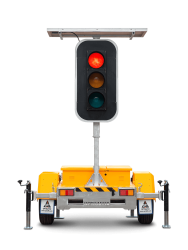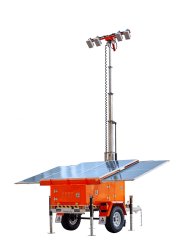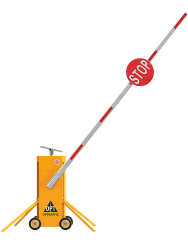
Introduction: The Importance of Arrow Boards in Traffic Management
In the realm of traffic management, ensuring safety and smooth flow is paramount. Arrow boards play a pivotal role in this domain, serving as crucial tools for guiding motorists and pedestrians through various traffic scenarios.
Setting the Scene: Why Traffic Control Matters
Effective traffic control is not just about managing vehicles; it’s about safeguarding lives. Every day, countless individuals rely on organized traffic systems to commute to work, school, or other essential destinations. Without proper control measures in place, the risk of accidents and congestion significantly rises. This underscores the critical need for reliable traffic management solutions that prioritize safety and efficiency.
The Role of Arrow Boards in Ensuring Safety
Arrow boards act as beacons of guidance amidst the bustling chaos of roadways. By strategically displaying directional information and warnings, they alert drivers to lane closures, detours, or potential hazards ahead. Their prominent visibility serves as a visual cue for motorists to adapt their driving behavior accordingly, reducing the likelihood of collisions and promoting a safer environment for all road users.
Case Study 1: Highway Lane Closure Success
In the realm of high-speed traffic management, the deployment of Arrow Boards presents a unique set of challenges and opportunities. The scenario often involves managing high-volume traffic while ensuring the safety and smooth flow of vehicles.
The Scenario: High-Speed Traffic Management
Amidst the hustle and bustle of high-speed traffic, managing lane closures poses a significant challenge. The sheer volume of vehicles navigating through these lanes demands a robust strategy to maintain order and safety. Strategic Arrow Board placement becomes crucial in effectively communicating lane closures and guiding motorists through alternative routes.
The Challenge: Managing High-Volume Traffic
The primary challenge in this scenario lies in orchestrating the seamless flow of a large number of vehicles while implementing necessary lane closures. This requires a delicate balance between maintaining traffic momentum and ensuring the safety of all road users. Without clear guidance, the risk of congestion and accidents escalates, underscoring the critical need for effective traffic control measures.
The Solution: Strategic Arrow Board Placement
To address this challenge, strategic Arrow Board placement emerges as a pivotal solution. By strategically positioning these dynamic signage tools at key points along the affected roadway, traffic authorities can effectively communicate upcoming lane closures and provide clear directions for motorists to navigate through alternative routes. This proactive approach not only enhances safety but also minimizes disruptions to traffic flow during maintenance or construction activities.
The Outcome: Enhanced Safety and Smooth Traffic Flow
The successful implementation of strategic Arrow Board placement yielded promising outcomes, significantly enhancing safety and streamlining traffic flow along the affected highway.
Key Factors in Success
- Strategic Positioning: Placing Arrow Boards at optimal locations along the highway maximized their visibility, ensuring that motorists received timely warnings about upcoming lane closures.
- Clear Communication: The use of concise messaging on the Arrow Boards effectively conveyed directional information, enabling drivers to make informed decisions well in advance.
- Adaptability: Flexibility in adjusting Arrow Board displays based on real-time traffic conditions allowed for dynamic responses to changing traffic patterns.
Lessons Learned
The case study underscored several valuable lessons:
- Proactive Planning: Anticipating high-traffic volumes during lane closures is essential for devising effective communication strategies using Arrow Boards.
- Continuous Monitoring: Regular assessment and adjustment of Arrow Board placements based on real-time traffic dynamics are crucial for optimizing their impact.
- Public Awareness: Educating motorists about the significance of heeding Arrow Board instructions contributes to overall compliance with traffic directives.
Case Study 2: Urban Street Maintenance and Safety
Navigating the complexities of urban traffic management presents a distinct set of challenges, particularly concerning the safety of pedestrians and cyclists amidst bustling city streets.
The Scenario: Navigating Urban Traffic Complexities
In urban environments, the coexistence of vehicular traffic, pedestrians, and cyclists necessitates a comprehensive approach to traffic control. The primary challenge lies in ensuring the safety of vulnerable road users while facilitating the smooth flow of urban mobility. Arrow Boards play a pivotal role in addressing these challenges by providing clear guidance and warnings to all road users.
The Challenge: Keeping Pedestrians and Cyclists Safe
The intricate web of urban traffic poses a significant challenge in safeguarding the well-being of pedestrians and cyclists. With multiple modes of transportation intersecting within limited spaces, the risk of accidents and collisions escalates. Effectively communicating potential hazards and lane closures to both motorists and non-motorized road users becomes imperative for fostering a safe urban environment.
The Solution: Versatile Use of Arrow Boards
To address these challenges, the versatile deployment of Arrow Boards emerges as a strategic solution. By leveraging their dynamic display capabilities, traffic authorities can convey essential information to all road users, including pedestrians and cyclists. Whether it’s indicating temporary pedestrian walkway adjustments or alerting cyclists to upcoming construction zones, Arrow Boards serve as adaptable tools for enhancing overall safety within urban settings.
The Outcome: Increased Visibility and Reduced Accidents
The implementation of versatile Arrow Board usage yielded tangible outcomes, significantly improving visibility and reducing accidents within urban street maintenance scenarios.
Key Factors in Success
- Multi-Modal Communication: Leveraging Arrow Boards to communicate with diverse road user groups enhanced overall awareness and compliance with safety directives.
- Customized Messaging: Tailoring Arrow Board displays to address specific pedestrian or cyclist-related concerns facilitated targeted communication strategies within urban environments.
- Collaborative Planning: Integrating Arrow Board placement considerations into comprehensive urban planning initiatives fostered cohesive efforts towards promoting safer streets for all road users.
Lessons Learned
The case study underscored several valuable lessons:
- Inclusive Communication: Recognizing the diverse needs of all road user groups is essential for optimizing the impact of Arrow Boards within urban settings.
- Contextual Adaptability: Adapting Arrow Board messaging based on specific urban maintenance activities contributes to more effective communication with pedestrians and cyclists.
- Community Engagement: Involving local communities in discussions regarding Arrow Board usage fosters a sense of shared responsibility for promoting safety within urban traffic environments.
Key Factors That Determine Arrow Board Performance
In the realm of traffic management, the performance of Arrow Boards hinges on several key factors that collectively influence their effectiveness in guiding and alerting road users.
Visibility and Placement: Ensuring Maximum Effectiveness
The visibility and strategic placement of Arrow Boards play a pivotal role in dictating their impact on traffic control scenarios. Several critical considerations come into play when determining the optimal positioning and display of these essential traffic management tools.
The Role of Speed and Traffic Volume
One of the primary determinants of Arrow Board performance is the speed of the surrounding traffic and the volume of vehicles traversing through a particular roadway. High-speed environments necessitate enhanced visibility and advanced warning capabilities to ensure that motorists can promptly react to upcoming lane closures or detours. Similarly, areas with high traffic volume require meticulous planning for Arrow Board placement to maximize their reach and influence amidst a larger number of vehicles.
Best Practices for Arrow Board Placement
Strategic placement is paramount for optimizing the effectiveness of Arrow Boards. Identifying key vantage points along roadways where maximum visibility can be achieved is crucial. Additionally, considering factors such as line-of-sight for approaching motorists, potential obstructions, and optimal viewing angles aids in determining the most effective locations for deploying Arrow Boards. Furthermore, aligning their placement with existing signage and traffic control devices ensures cohesive communication to drivers, reinforcing the importance of consistent visual cues within traffic management frameworks.
Technology and Innovation: The Future of Arrow Boards
As technology continues to advance, so does the potential for innovation within the realm of Arrow Boards, paving the way for enhanced functionality and safety features.
Advancements in Arrow Board Technology
The evolution of Arrow Board technology has seen remarkable advancements aimed at augmenting their capabilities in addressing diverse traffic control needs. From improved LED displays with heightened brightness levels to integrated connectivity features that enable remote monitoring and control, modern Arrow Boards are equipped with state-of-the-art components designed to elevate their performance in various traffic scenarios. Furthermore, innovations in power efficiency have led to sustainable operational models that reduce energy consumption without compromising visibility or functionality.
How Innovation Enhances Traffic Safety
The integration of innovative features within Arrow Boards directly contributes to bolstering overall traffic safety measures. Enhanced visibility through advanced display technologies ensures that critical information reaches drivers with heightened clarity, reducing ambiguity during lane closures or directional changes. Moreover, real-time data transmission capabilities enable swift adjustments based on evolving traffic conditions, fostering adaptive responses that align with dynamic road usage patterns. By embracing technological innovations, Arrow Boards not only enhance their individual performance but also contribute significantly to broader initiatives aimed at fortifying comprehensive traffic safety frameworks.
Conclusion: The Future of Traffic Control with Arrow Boards
As the realm of traffic management continues to evolve, the role of Arrow Boards remains integral in shaping the future landscape of traffic control devices.
Summing Up: The Impact of Arrow Boards on Traffic Safety
The impact of Arrow Boards on traffic safety cannot be overstated. These dynamic signage tools serve as beacons of guidance, effectively communicating crucial information to motorists and pedestrians alike. By alerting drivers to lane closures, detours, and potential hazards, Arrow Boards play a pivotal role in enhancing overall road safety. Their prominent visibility and strategic placement contribute to reducing the likelihood of accidents and promoting a safer environment for all road users. As technology advances, the potential for further enhancing their impact on traffic safety becomes increasingly promising.
Looking Ahead: The Evolution of Traffic Control Devices
Looking towards the future, the evolution of traffic control devices, including Arrow Boards, holds immense potential for revolutionizing how traffic management is approached. With ongoing advancements in display technologies and connectivity features, Arrow Boards are poised to become even more versatile and effective in addressing diverse traffic scenarios. The integration of innovative components aimed at bolstering visibility and adaptability will pave the way for a new era of enhanced traffic safety measures. Furthermore, as sustainability takes center stage in infrastructure development, eco-friendly operational models for Arrow Boards will likely emerge, aligning with broader initiatives focused on environmental responsibility within traffic management frameworks.
In conclusion, the future of traffic control with Arrow Boards is characterized by a trajectory towards heightened effectiveness and adaptability. As these essential tools continue to evolve alongside technological innovations, their pivotal role in ensuring safety and efficiency within traffic management is set to expand even further.
